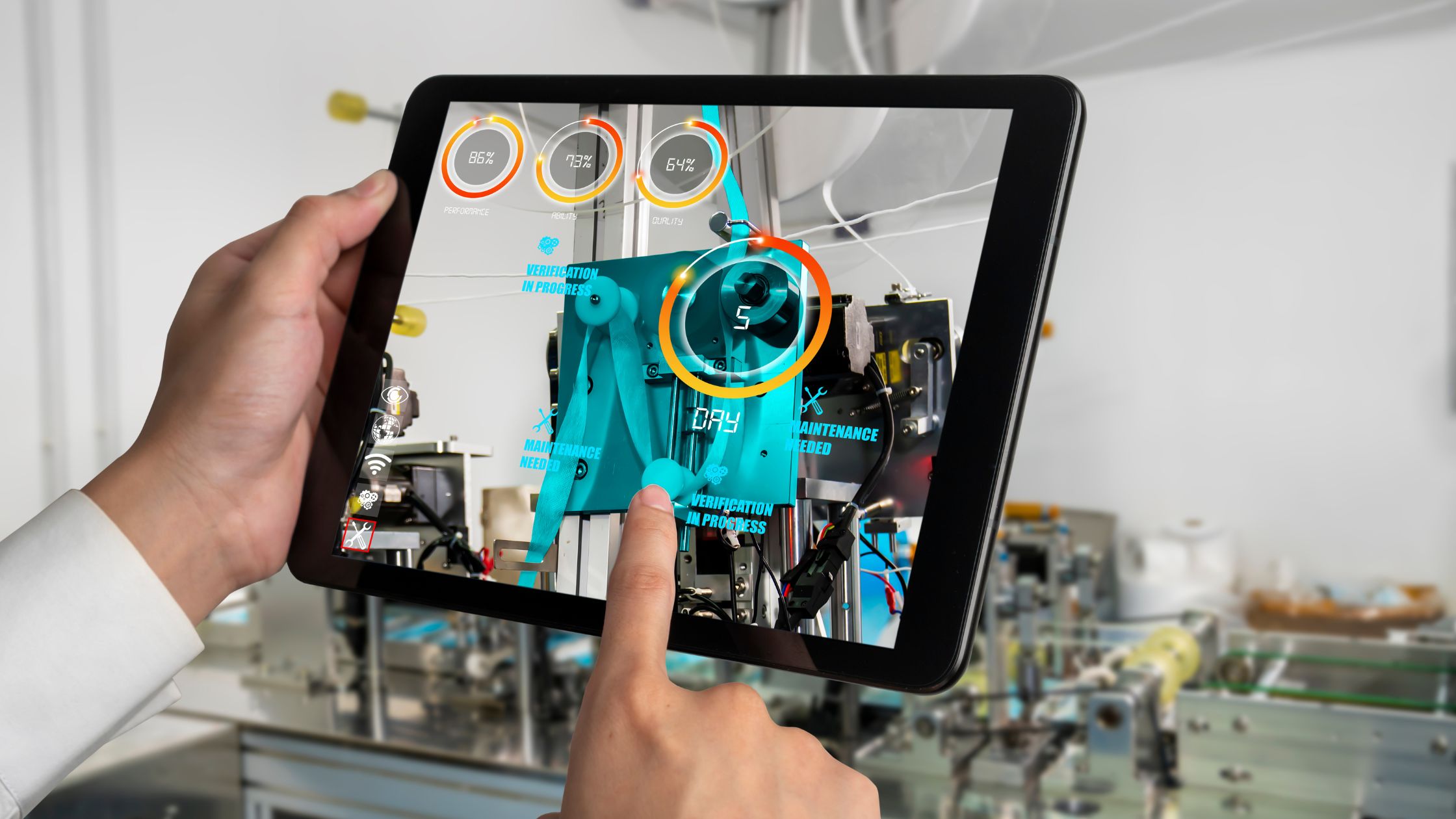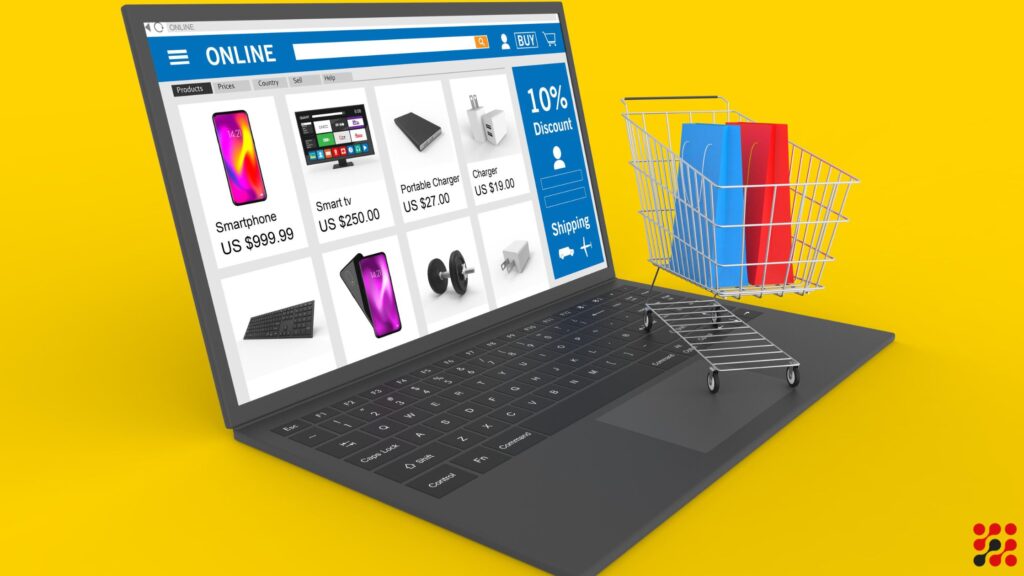If you’re curious about the expenses of bringing your AR vision to life, you’re in the right place.
In this comprehensive guide, we’ll dig out the factors influencing augmented reality app development cost, explore different pricing structures, and equip you with the knowledge to navigate the AR costs.
Why Your Business Needs an AR App?
In 2024, the valuation of the mobile augmented reality (AR) market reached approximately 12.45 billion U.S. dollars.
Projections indicate that the market is set to expand significantly, nearing a size of 17 billion U.S. dollars in 2025, and is expected to surge past 36 billion U.S. dollars by 2026.
Source: Statista

Source: Google
Augmented Reality App Development Cost for Startups, SMEs and Enterprises
For startups and small to medium-sized enterprises (SMEs), the development cost typically ranges from $20,000 to $100,000. This budget would cover basic AR applications with MVP features and functionalities.
However, for larger enterprises with more extensive requirements and customization needs, the cost can exceed $100,000 and may range up to several hundred thousand dollars or more.
It’s essential for businesses to carefully assess their specific needs and budget constraints when planning for AR app development.
AR Costs Breakdown
Basic AR apps with simple features like image recognition or location-based AR typically range from $20,000 to $50,000.
Mid-level AR apps with more advanced functionalities such as 3D object tracking or markerless AR may cost between $50,000 and $100,000.
Highly complex AR applications with advanced features like real-time multiplayer interactions or extensive backend integrations can exceed $100,000 and may range up to several hundred thousand dollars.
Below is a table summarizing the complexity-wise cost range for AR app development:
| Complexity Level | Cost Range |
|---|---|
| Basic | $20,000 – $50,000 |
| Mid-Level | $50,000 – $100,000 |
| Highly Complex | $100,000+ |
How Much Does A R Cost – Formula
To accurately calculate the cost of developing an augmented reality (AR) app, a simple formula is employed:
Total AR App Development Cost = Time Required to Develop an AR App × Developer’s Hourly Charge
Let’s delve deeper into each component of the formula:
Time Required to Develop an AR App
This refers to the total duration needed to complete the development of the AR app. For instance, if the estimated time is 250 hours, this value is plugged into the formula.
Developer’s Hourly Charge
This represents the hourly rate charged by the developers involved in the project. Let’s assume an hourly rate of $25 for this example.
By multiplying the time required by the developer’s hourly charge, we can determine the total AR app development cost. Using the example, the calculation would be:
Total AR App Development Cost = 250 hours × $25/hour = $6,250
Therefore, the estimated cost for developing the AR app amounts to $6,250.
This formula serves as a guideline for calculating the app development price accurately, enabling better budgeting and planning for AR projects.
AR App Development Cost in 15 Different Regions
The cost of developing augmented reality (AR) apps depends on the offshore region and the prevailing rates of app developers.
Below, we outline the region-wise cost to develop augmented reality app.
| Country | Cost per Hour (USD) | Cost per Month (USD) |
|---|---|---|
| India | $20 – $50 | $3,000 – $7,000 |
| Pakistan | $25 – $55 | $3,500 – $8,000 |
| Ukraine | $30 – $60 | $4,000 – $9,000 |
| Vietnam | $35 – $65 | $4,500 – $10,000 |
| Indonesia | $40 – $70 | $5,000 – $11,000 |
| Mexico | $45 – $75 | $5,500 – $12,000 |
| Philippines | $50 – $80 | $6,000 – $13,000 |
| Brazil | $55 – $85 | $6,500 – $14,000 |
| Poland | $60 – $90 | $7,000 – $15,000 |
| Argentina | $65 – $95 | $7,500 – $16,000 |
| Romania | $70 – $100 | $8,000 – $17,000 |
| United Arab Emirates | $75 – $105 | $8,500 – $18,000 |
| Germany | $80 – $110 | $9,000 – $19,000 |
| United Kingdom | $85 – $115 | $9,500 – $20,000 |
| United States | $100 – $150 | $11,000 – $25,000 |
How Much Does A R Cost for Each Feature/Milestone?
Below is a table illustrating the cost of developing AR apps with ten distinct features.
| Feature | Industry | Cost (USD) |
|---|---|---|
| Image Recognition | AR furniture placement apps | $20,000 – $50,000 |
| Location-Based AR | AR navigation apps | $25,000 – $60,000 |
| 3D Object Tracking | Gaming | $30,000 – $70,000 |
| Markerless AR | Ecommerce | $35,000 – $75,000 |
| Real-time Multiplayer | AR social apps | $40,000 – $80,000 |
| Social Sharing Integration | AR photo editing apps | $45,000 – $85,000 |
| Wearable Devices | Fitness | $50,000 – $90,000 |
| Customizable UI | AR marketing and branding apps | $55,000 – $95,000 |
| Offline Mode | AR tourism and exploration apps | $60,000 – $100,000 |
| Analytics and Reporting | AR data visualization apps | $65,000 – $110,000 |
10 Factors That Influence AR App Development Cost
Each factor plays an important role in shaping the financial scope of AR app development.
| Factors | Description | Cost (USD) |
|---|---|---|
| Complexity of Features | The number and complexity of features integrated into the app | $20,000 – $100,000 |
| Platform Compatibility | Compatibility with various platforms such as iOS, Android, or both | $5,000 – $20,000 |
| Design and UI/UX | Quality of user interface (UI) and user experience (UX) design | $10,000 – $30,000 |
| Content Creation | Creation of 3D models, animations, and interactive elements | $5,000 – $50,000 |
| Backend Integration | Integration with backend systems, databases, and APIs | $10,000 – $40,000 |
| Testing and Quality Assurance | Rigorous testing to ensure functionality and performance | $5,000 – $20,000 |
| Augmented Reality SDKs | Licensing or development costs for AR software development kits | $2,000 – $15,000 |
| Location-Based Services | Integration with GPS or location-based services for AR apps | $5,000 – $15,000 |
| Real-time Collaboration | Real-time multiplayer features for collaborative AR experiences | $5,000 – $20,000 |
| Legal and Regulatory Compliance | Compliance with data protection and privacy regulations | $2,000 – $10,000 |
Things to Consider Before Launching Your AR App
You can build a successful augmented reality app that meets the needs of your target audience and achieves your business objectives.
Define Your Objective
Clearly outline the purpose and goals of your AR app to ensure alignment with your business objectives or user needs.
Target Audience
Understand your target audience’s preferences, behaviour, and device preferences to tailor the AR experience accordingly.
Platform Selection
Decide whether you’ll develop the app for iOS, Android devices, or cross platforms based on your target audience and technical requirements.
| Tool Name | Ratings (Out of 5) | Features | Platform Support |
|---|---|---|---|
| Unity | 4.5 | Comprehensive 3D development platform
Extensive AR development tools and plugins |
iOS, Android, Others |
| ARKit | 4.2 | –
Advanced scene understanding and rendering capabilities integration with iOS devices – Support for USDZ files |
iOS |
| ARCore | 4.3 | –
Motion tracking, environmental understanding, and light estimation Cloud Anchors for multi-user AR experiences |
Android |
| Vuforia | 4.1 | –
Image recognition, object recognition, and marker-based tracking Cloud Recognition |
iOS, Android, Others |
| Wikitude SDK | 4.0 | –
Geo-location AR capabilities 3D model rendering and animation Support for JavaScript API |
iOS |
AR Technology
Choose the appropriate AR technology, whether marker-based, markerless, or location-based, depending on the app’s functionality and intended use cases.
Cost to Develop Augmented Reality App – Different Types
Below is a table illustrating 8 different types of AR applications
| Type of AR Application | Description | Cost to Build Each Type (USD) |
|---|---|---|
| Projection-based AR | Real-time interaction, dynamic content projection | $10,000 – $50,000 |
| Marker-based AR | Marker recognition, 3D object tracking, interactive overlays | $15,000 – $60,000 |
| Superimposition AR | Object recognition, real-time rendering, virtual object interaction | $30,000 – $100,000 |
| Recognition-based AR | Image recognition, text recognition, logo recognition | $35,000 – $110,000 |
| Projection-mapping AR | Dynamic projection mapping, spatial calibration, content masking | $40,000 – $120,000 |
| Gesture-based AR | Gesture recognition, hand tracking, interactive gestures | $45,000 – $130,00 |
Benefits of Developing AR Apps
Here are six industries ripe for leveraging AR technology, along with the benefits of launching an AR app in each
Retail
In the retail sector, AR apps can enhance the shopping experience by allowing customers to virtually try on clothing and accessories, visualize furniture in their homes before purchase, and access product information in-store through AR product labels.
Benefits include increased engagement, reduced return rates, and brand loyalty.
Education
AR apps in education offer interactive and immersive learning experiences, allowing students to explore historical sites and visualize complex concepts in 3D.
Benefits include improved retention rates, student engagement, and personalized learning experiences.
AR applications in healthcare facilitate medical training, patient education, and surgical planning by offering detailed anatomical visualizations, remote assistance during surgeries, and AR-guided rehabilitation exercises.
Benefits include enhanced training outcomes, improved patient understanding, and more precise surgical procedures.
Real Estate
Apps in real estate enable prospective buyers to virtually tour properties, visualize renovations, and explore neighborhoods in immersive 3D environments.
Benefits include increased property inquiries, reduced time-to-sale, and superb customer satisfaction.
Gaming
The gaming industry can leverage AR technology to create interactive and location-based gaming experiences, blending digital content with the real world to engage players in innovative ways.
Benefits include increased player immersion, social interactions, and extended gameplay possibilities.
Manufacturing
AR apps in manufacturing improve production processes, provide hands-free access to assembly instructions, and offer remote assistance for troubleshooting equipment issues.
Benefits include improved productivity, reduced downtime, and scale worker safety.
5 Real Life Examples of AR Apps
These real-life AR apps exemplify the versatility, showcasing its potential to enhance entertainment, social interaction, retail, navigation, and more in our everyday lives.
Pokemon GO
Perhaps one of the most famous AR apps, Pokemon GO took the world by storm upon its release in 2016. Developed by Niantic, the app allows users to explore the real world while capturing virtual creatures known as Pokémon.
By leveraging GPS and AR technology, players can encounter and catch Pokémon in their surroundings, fostering physical activity, social interaction, and exploration.
IKEA Place
IKEA Place is an AR app developed by the furniture giant IKEA, allowing users to visualize how furniture items would look and fit in their homes before making a purchase.
By using their smartphone camera, users can place virtual furniture pieces in their living spaces at scale, enabling them to make informed decisions about their interior design choices.
Snapchat
Snapchat is a popular social media platform known for its innovative AR features, including AR filters and lenses.
With Snapchat’s AR capabilities, users can overlay digital effects, animations, and masks onto their selfies and videos in real-time.
These AR experiences have become integral to the platform’s appeal, driving user engagement and creativity.
Google Maps AR Navigation
Google Maps introduced AR navigation features to assist users with walking directions in urban environments.
With AR navigation, users can view real-time walking directions overlaid onto the live view from their smartphone camera, making it easier to navigate unfamiliar streets and landmarks.
This AR feature enhances user convenience and improves navigation accuracy.
Wanna Kicks
Wanna Kicks is an AR app that allows users to virtually try on sneakers from various brands.
By using AR technology, users can see how different pairs of shoes look on their feet in real-time, facilitating the online shopping experience and helping them make confident purchase decisions.
Wanna Kicks demonstrates how AR can enhance the retail experience by offering immersive try-on experiences from the comfort of home.
AR Costs FAQs
What are the main cost drivers for AR app development?
The main cost drivers include the complexity of the app, platform compatibility, design and UI/UX requirements, content creation, backend integration, and testing and QA efforts.
How can I reduce AR app development costs?
To reduce costs, consider simplifying the app’s features and functionalities, prioritizing MVP or essential features, leveraging existing assets for content creation, and choosing a cost-effective pricing model that aligns with your budget and project requirements.
Are there ongoing maintenance costs for AR apps?
Yes, ongoing maintenance costs may include updates, bug fixes, security patches, and performance optimization to ensure the continued functionality and usability of the AR app over time.
Can I hire offshore developers to reduce AR app development costs?
Yes, hiring offshore developers from TechnologyAlly can help reduce AR app development costs. With a proven track record of delivering high-quality solutions.








